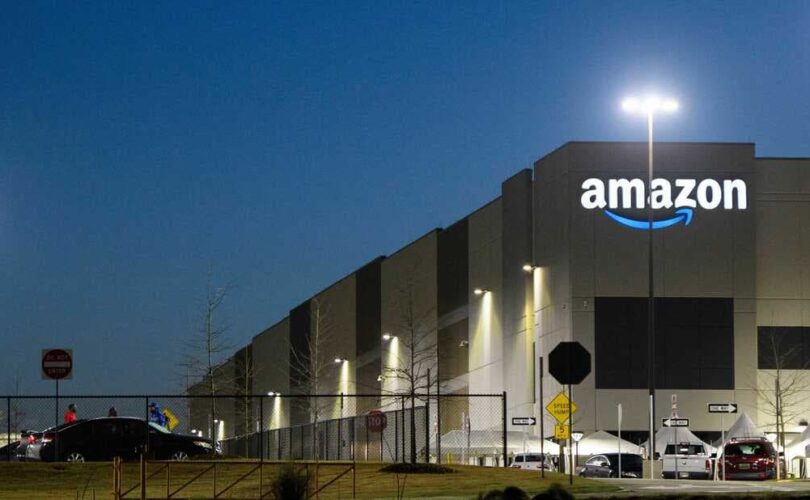Venturing into the world of e-commerce, especially on Amazon, offers lucrative opportunities. Selling wholesale products requires understanding the marketplace dynamics and consumer demand. Amazon, as a leading e-commerce platform, offers a vast audience and advanced tools to support sellers. The concept of wholesale selling involves purchasing products in bulk at lower prices and selling them individually at a markup. This business model is particularly appealing due to its scalability and potential for steady income. However, success in this arena requires strategic planning, market analysis, and a commitment to continuous learning. This section will introduce the fundamentals of wholesale selling on Amazon, highlighting its potential benefits and challenges.
Utilizing Amazon FBA for Wholesale
Amazon’s Fulfillment by Amazon (FBA) service revolutionizes the wholesale selling process by handling logistics, including storage, packing, and shipping. This enables sellers to focus on sourcing and marketing their products. Utilizing FBA for wholesale selling offers several advantages, such as access to Amazon’s vast customer base, eligibility for Prime shipping, and reduced operational burdens. By leveraging FBA, sellers can enhance their market reach and customer satisfaction, leading to increased sales and revenue. This section will delve into the mechanics of Amazon FBA, its benefits for wholesale sellers, and how to integrate it effectively into your business model.
Comparing Business Models: Wholesale vs Others
Choosing the right business model is crucial for success on Amazon. This section compares wholesale selling with other popular models like retail arbitrage, online arbitrage, private labeling, and drop-shipping. Retail arbitrage involves buying products from physical stores and selling them online for a profit. Online arbitrage follows a similar concept but with online purchases. Private labeling involves branding generic products under your label, while drop-shipping allows selling products without handling inventory. Each model has its unique pros and cons, such as investment requirements, scalability, risk levels, and operational complexities. Understanding these differences helps in making an informed decision about which model aligns best with your goals, resources, and risk appetite.
Insights into Amazon Wholesale FBA
Amazon Wholesale FBA stands out as a business model due to its integration with Amazon’s logistic capabilities. It allows sellers to buy branded products in bulk and resell them under the Amazon FBA program. This model provides an edge over traditional wholesaling by eliminating the need for personal storage space and complex logistics management. Sellers can benefit from Amazon’s trusted fulfillment process, which includes handling customer service and returns. This section will explore the operational aspects of Amazon Wholesale FBA, highlighting how it streamlines the selling process, reduces operational costs, and enhances customer experience. It also discusses the nuances of product selection, pricing strategies, and managing inventory within the Amazon ecosystem.
Strategies for Effective Wholesale Selling
Effective wholesale selling on Amazon requires a combination of strategic planning, market research, and operational efficiency. Key strategies include identifying high-demand products, optimizing pricing for competitiveness and profitability, and understanding Amazon’s search algorithm to enhance product visibility. Effective inventory management and leveraging Amazon’s promotional tools are also critical. This section provides a deep dive into these strategies, offering insights on how to maximize sales and profits through smart decision-making. It covers aspects like market analysis, pricing strategies, and the importance of customer reviews and ratings. Additionally, it discusses the significance of staying updated with Amazon’s evolving policies and marketplace trends to stay ahead in the competitive landscape.
Selecting Profitable Wholesale Products
The success of Amazon’s wholesale selling largely depends on product selection. This involves finding products that strike a balance between high demand and manageable competition. This section discusses how to identify such products, focusing on analyzing market trends, customer preferences, and competition. It emphasizes the importance of using analytical tools to assess product viability, including sales history, pricing trends, and profit margins. Factors like seasonality, niche markets, and brand reputation also play a significant role in product selection. The section also explores strategies to source products efficiently, including building relationships with reliable suppliers and staying abreast of emerging market opportunities. By the end of this section, readers will have a comprehensive understanding of how to select products that not only sell well but also offer good profit margins.
Expert Tips for Amazon Wholesale Success
Achieving success in Amazon wholesale requires more than just understanding the basics. This section offers expert tips that can help elevate your wholesale business. It includes advice on how to differentiate your product listings, improve customer engagement, and effectively manage your seller reputation. The importance of continuous learning and adapting to changes in the Amazon marketplace is emphasized. Topics like optimizing product descriptions, using high-quality images, and engaging with customer feedback are covered. Additionally, the section discusses the significance of efficient supply chain management and keeping abreast of industry trends and best practices. These tips are designed to help sellers not just survive, but thrive in the competitive Amazon marketplace.
Navigating Wholesale Supplier Selection
Selecting the right suppliers is a pivotal aspect of Amazon’s wholesale selling. This section guides you through the process of identifying and partnering with reliable suppliers. It covers how to evaluate suppliers based on factors like product quality, pricing, reliability, and their ability to meet demand. The importance of establishing a good relationship with suppliers for long-term success is highlighted. Different avenues for finding suppliers, such as trade shows, online directories, and industry networks, are explored. The section also provides insights into negotiating terms, understanding supplier capabilities, and ensuring a consistent supply chain. By the end of this section, readers will have a clear understanding of how to find and work with suppliers that align with their business objectives and contribute to a successful wholesale operation on Amazon.
Unique Section: Key Bullet Points for Quick Success
For a quick overview of essential strategies for Amazon’s wholesale success, consider these key bullet points:
- Understand Amazon’s algorithm: Stay updated with how Amazon ranks products and optimizes your listings accordingly;
- Quality over quantity: Focus on a few high-quality products rather than a large variety of items;
- Price competitively: Set prices that are attractive to customers but still profitable for you;
- Build a brand: Establish a strong brand presence to differentiate your products from competitors;
- Customer service: Provide excellent customer service to build trust and encourage repeat business;
- Monitor performance: Regularly review your sales data and customer feedback to identify areas for improvement;
- Stay compliant: Always adhere to Amazon’s rules and regulations to avoid account suspension;
- Network: Build relationships with other sellers and industry experts to stay informed about the latest trends and tips.
Comparative Table: Analyzing Selling Strategies
| Selling Strategy | Startup Costs | Operational Complexity | Scalability | Risk Level | Potential Profitability |
|---|---|---|---|---|---|
| Wholesale | Moderate | Medium | High | Medium | High |
| Retail Arbitrage | Low | High | Low | Low | Moderate |
| Online Arbitrage | Low | Medium | Moderate | Low | Moderate |
| Private Labeling | High | High | High | High | Very High |
| Drop-Shipping | Low | Low | High | Medium | Modera |
Video Guide
To answer your questions in more detail, we have prepared a special video. Enjoy watching it!
Conclusion
Concluding the guide, this section encapsulates the key takeaways and encourages readers to apply the insights gained for a successful Amazon selling journey. It emphasizes the importance of adapting strategies to changing market conditions, continuous learning, and staying committed to delivering quality and value to customers. The conclusion reaffirms the potential of Amazon as a platform for sellers and motivates them to explore and maximize the opportunities it presents. Whether you are a new seller or looking to expand your existing business, this guide provides the foundation and inspiration needed to excel in the competitive world of Amazon wholesale selling.






